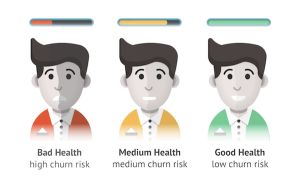The Significance of Site Health Score
When it comes to achieving success in the ever-changing terrain of the digital world, it is essential to keep a strong online presence. When assessing the overall health of a website, the Site Health Score is one of the metrics that plays a significant role in the evaluation process. This score takes into account a number of different aspects that come into play when determining the performance, security, and user experience of a website. Within the scope of this essay, we will investigate the factors that have an impact on a Site Health Score, as well as the reasons why it is important for website owners and users alike.
Defining Site Health Score
A website’s overall health and performance can be evaluated using a metrics known as the Site Health Score, which is an all-encompassing scale. In addition to other considerations, it takes into account the speed at which pages load, the protocols used for security, and the responsiveness of mobile devices. A quick glimpse of how effectively a website is optimized for search engines and how user-friendly it is can be obtained by utilizing this score.

One of the most important aspects that search engines like Google take into consideration when deciding the ranking of a website in the search results is the Site Health Score. It is common practice to give higher priority to websites that have higher scores because it is believed that these websites provide a better user experience. Therefore, gaining an awareness of your website’s health score and actively trying to enhance it can have a big impact on the success and visibility of your online presence. https://diversewebsitedesign.com.au/farmer-website-design/
Key Components of Site Health Score
Now that we have that out of the way, let’s dive into the essential elements that make up a solid Site Health Score:
1. Page Load Speed
Speed of page load is an important component in both the user experience and the ranking of a website in search engines. Pages that load slowly can result in greater bounce rates, which can have a negative influence on both user satisfaction and search engine optimization. Some of the tactics that can be utilized to improve the speed at which pages load include optimizing pictures, utilizing browser caching, and making use of content delivery networks (CDNs).
2. Mobile Responsiveness
Having a website that is adaptable to mobile devices is an absolute necessity in light of the growing prevalence of mobile devices. Google gives preference to websites that are optimized for mobile use, and a strong Site Health Score takes into account how well a website accommodates visitors who access it from a variety of devices.
3. Security Protocols
Web security is of the utmost importance. A higher Site Health Score can be achieved through the use of HTTPS, the usage of secure sockets layer (SSL) certificates, and the performance of routine security audits. Not only does a safe website protect the data of its users, but it also works to develop confidence among its visitors.
4. Quality Content
You should always remember that content is king, and the quality of your material is a significant factor in calculating your Site Health Score. Not only does material that is interesting, pertinent, and well-structured keep users on your website for longer periods of time, but it also sends a message to search engines communicating that your website is a useful resource.

5. User-Friendly Navigation
It is crucial for a pleasant user experience to have navigation that is easy to understand. Having a site structure that is well-organized, with menus that are easy to understand and information that is simple to locate, adds to a higher Site Health Score. Your website should be easy to use, and users should be able to locate the information they require without experiencing any difficulty.
Improving Your Site Health Score
Now that we have discussed the most important aspects of a Site Health Score, let’s investigate the various methods that may be utilized to enhance and sustain a high score:
1. Regularly Monitor and Analyze
Make use of tools for website analytics in order to routinely monitor the performance of your website. Determine the areas that require improvement and monitor the effects of the adjustments throughout the course of time. This method, which is driven by data, gives you the ability to make well-informed decisions that will improve your Site Health Score.
2. Optimize Images and Multimedia
Your website’s performance may be considerably hindered by the presence of large video and image files. Compressing photos, making use of appropriate file formats, and implementing lazy loading are all ways to increase the speed at which pages load without sacrificing the quality of the images themselves.

3. Prioritize Mobile Optimization
You should make sure that your website is not only compatible with mobile devices but also provides the best possible user experience across a variety of devices. You should test the responsiveness of your website and make any necessary improvements in order to accommodate the growing number of mobile users.
4. Invest in Website Security
Implementing HTTPS, performing frequent software and plugin updates, and conducting security audits are all effective ways to maintain the safety of your website. Your site and the data of your users are protected when you make an investment in a strong security infrastructure, and this investment also has a beneficial impact on your Site Health Score.
5. Create High-Quality, Relevant Content
Concentrate on producing information that is beneficial to the people who are reading it. A constant posting schedule should be maintained, keyword research should be conducted, and user questions should be answered. A great Site Health Score is one of the benefits that comes from having high-quality content, which also helps to attract visitors.

6. Optimize Site Navigation
The navigation of your website should be simplified in order to provide a user-friendly experience. You should conduct usability tests in order to discover any problems and then make improvements in order to optimize the flow of your website as a whole.
Conclusion
To summarise, in the current digital landscape, a good Site Health Score is absolutely necessary for the success of any website. Enhancing your online visibility, user experience, and general performance may be accomplished by first gaining a grasp of the major components and then putting into action ideas that will help you raise your score. In order to keep a healthy and growing online presence, it is vital to perform regular monitoring, make attempts to optimize, and make a commitment to supplying content that is of value. It is important to keep in mind that a good Site Health Score is not only advantageous for search engine results, but it is also essential for establishing trust and credibility among your audience.




